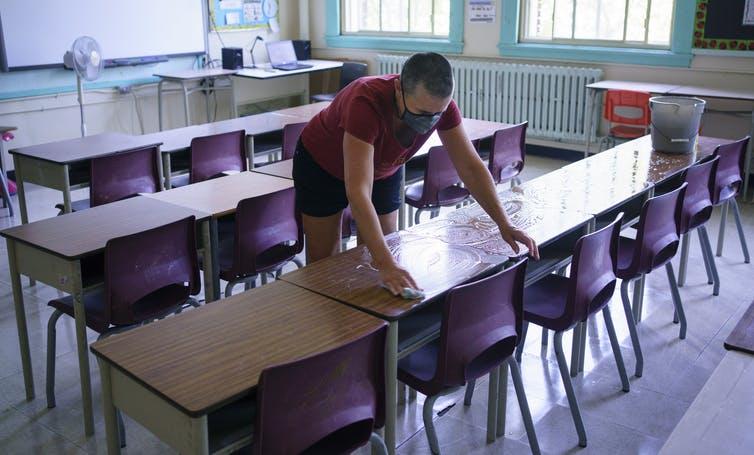Sept. 11, 2020
School funding is needed for student well-being, not only coronavirus safety rules

As the first yellow buses filled with students pull up to schools this September, a critical window for planning to manage the COVID-19 pandemic in schools has closed. With an eye on the whole school year, and children’s long-term social and academic development, teachers and school administrators continue to advocate for long-term planning that goes beyond this month.
Some may be glad to know that in Alberta, districts will receive a “a portion of $262 million in federal funds … to be allocated toward staffing, cleaning and personal protective equipment to reduce the risk of spreading COVID-19.” But educators also know that student wellness is about more than limiting viral spread.
Educators are concerned about how school closures have influenced their students’ academic progress and well-being. They are worried about the academic and wellness consequences for students who did not receive adequate special needs supports or did not flourish during emergency remote instruction.
Read more: Coronavirus school closures could widen inequities for our youngest students
They want help to care for students who are experiencing grief as a result of losses during the pandemic, and to provide support for other children and youth who experienced instability, adversity or abuse at home.
Far beyond September, vulnerable students in particular, such as those facing hunger, food insecurity or abuse, will require significant support to cope with the impact of their lost time from school.
Social, academic needs
Teachers and school administrators know that they will spend much of the first week back at school focusing on safety practices. But they’ll also need the time and resources to observe and assess their students, keeping a close eye on the needs they are presenting both socially and academically.
They also know that without adequate school staff support, such as school psychologists or educational assistants, both children and teachers may struggle to bounce back from adversity and thrive this year.
Addressing children and youth’s return-to-school needs requires more than enforcing basic health practices to minimize the spread of COVID-19, and the efforts of one caring teacher.

Teachers greet students in the school yard at the Philippe-Labarre Elementary School in Montréal, Aug. 27, 2020.
THE CANADIAN PRESS/Paul Chiasson
Strong systems
Teachers have an undeniable influence on student achievement, but from many years working in schools, I know that student achievement also depends on the undervalued, but enormously critical, work of educational assistants, bus drivers, custodians, support staff, librarians and counsellors. A strong educational system is held together by multiple people.
Teachers and administrators without adequate supports can become tired, burned out and overwhelmed by the effort of providing emotional labour to the many children and youth in their care.
Reductions in investments in public education have meant that teachers have become untrained social workers, bus drivers and librarians, while school administrators have stepped into the role of novice therapists, support staff and custodians.

Grade 2 teacher Nancy Poirier washes the desks in her classroom in preparation for the new school year at the Willingdon Elementary School in Montréal on Aug. 26, 2020.
THE CANADIAN PRESS/Paul Chiasson
Team support
Children and youth lack the life experience to see that daily stress is temporary, so in times of mental or emotional distress, they demand immediate support and attention. Having a team to provide support can ensure that students facing adversity do not have to wait days, weeks or even months for the help they need.
For 10 years, I taught at a school for pregnant and parenting teen-aged girls that followed what’s known as a wraparound model.
When the students came to school, they could access their social worker for social and emotional support, a dedicated nurse for pre- and post-natal care, an on-site infant learning centre and nutritious food from a low-cost cafeteria. As a result of these investments, these students had a higher rate of high school completion and their children have better health and educational outcomes than similar populations without these supports. The teachers could focus on teaching, not meeting all the social and emotional needs of the students.
Needed: Community of heroes
Investing in on-site supports in all public education schools is a proactive measure that can build resilience and have a positive impact on students’ academic and nonacademic success.
Unfortunately, the funding trend in several provinces has been in the opposite direction, with fewer resources being allocated to schools and more expectations laid on exhausted teachers and administrators.
Right now, crucial mental health and learning support professionals are shared between many different schools or are entering private practice. Educational assistants are often treated as disposable labour, rather than key caregivers for students needing targeted learning interventions.
To maintain Canada’s reputation for excellence in education, let’s support our over-extended teachers and school leaders by investing in a community of heroes to support children and youth in schools.





